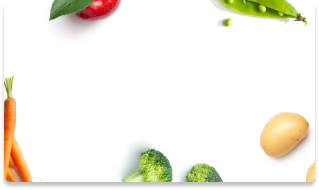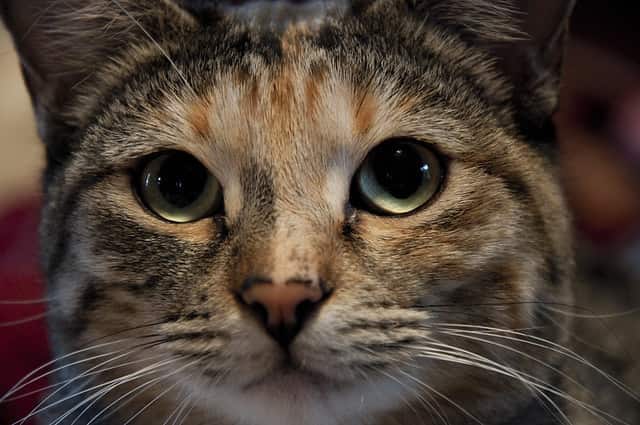
-
Find the right food for your pet
Take this quiz to see which food may be the best for your furry friend.
Find the right food for your pet
Take this quiz to see which food may be the best for your furry friend.
Featured products
 Adult Perfect Weight & Joint Support Chicken Recipe Dry Dog Food
Adult Perfect Weight & Joint Support Chicken Recipe Dry Dog FoodThis weight management and mobility support dog food was created with Hill’s unique understanding of the biology of overweight dogs.
Shop Now Adult 7+ No Corn, Wheat, Soy Chicken & Brown Rice Dog Food
Adult 7+ No Corn, Wheat, Soy Chicken & Brown Rice Dog FoodSupports energy level and beautiful coat in mature dogs
Shop Now Adult 7+ Perfect Digestion Chicken, Whole Oats & Brown Rice Recipe Dog Food
Adult 7+ Perfect Digestion Chicken, Whole Oats & Brown Rice Recipe Dog FoodScience Diet's breakthrough nutrition supports ultimate digestive well-being & healthy microbiome for dogs age 7+
Shop NowFeatured products
 Perfect Weight Salmon & Vegetable Canned Cat Food
Perfect Weight Salmon & Vegetable Canned Cat FoodOver 70% of cats lost weight within 10 weeks when fed this nutrition
Shop Now Adult Perfect Digestion Chicken, Barley & Whole Oats Recipe Cat Food
Adult Perfect Digestion Chicken, Barley & Whole Oats Recipe Cat FoodScience Diet's breakthrough nutrition supports ultimate digestive well-being & healthy microbiome
Shop Now Adult Savory Chicken Entrée Cat Food
Adult Savory Chicken Entrée Cat FoodPrecisely balanced nutrition with the delicious taste of savory minced chicken to help fuel the energy needs of cats during the prime of their life
Shop Now -
Dog
- Dog Tips & Articles
-
Health Category
- Weight
- Food & Environmental Sensitivities
- Urinary
- Digestive
- Joint
- Kidney
-
Life Stage
- Puppy Nutrition
- Adult Nutrition
- Senior Nutrition
Cat
- Cat Tips & Articles
-
Health Category
- Weight
- Skin & Food Sensitivities
- Urinary
- Digestive
- Kidney
-
Life Stage
- Kitten Nutrition
- Adult Nutrition
Featured articles
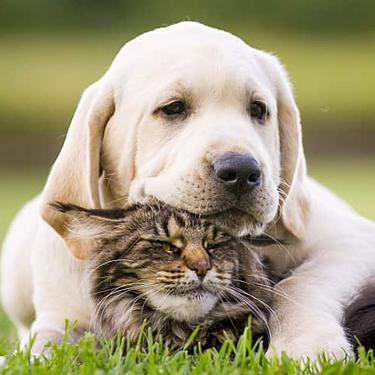 The Incredible Science Behind Your Pet's Microbiome
The Incredible Science Behind Your Pet's MicrobiomeLearn what a pet's microbiome is, how it contributes to your pet's gut & overall health, and why nutrition is important in maintaining healthy microbiomes.
Read More Water
WaterDiscover why water is the most important nutrient for your dog or cat to live a healthy life. Find out how much water your pet should consume each day.
Read More Pet Food Storage Tips
Pet Food Storage TipsDiscover how and where to store your dry, as well as canned, dog and cat food. Learn how to find the "best before" dates on all Hill's pet food packaging.
Read More -
Find the right food for your pet
Find the right food for your pet


Sharing your home with spirited cats makes life interesting. But, if your kitty has a tendency to become aggressive, you may not know what to do. Aggressive cats aren't uncommon. Learning how to calm an aggressive cat can help you build a strong and loving bond with your feline friend.
How to Identify Aggressive Behavior
Understanding a cat's body language during "normal" circumstances can help you identify when they're acting out of character. "It enables [pet parents] to more accurately 'read' their cats and understand their feelings and motivations for doing what they do. It also helps them respond more effectively to behavior issues like aggression," explains the ASPCA. Cats use their eyes, ears, tail and voice to communicate with their people, and as you get to know your cat, you'll recognize their behavior patterns for wanting food, playtime and affection.
Some cats are naturally rowdy, doing crazy things such as running up and down the hallway (always in the middle of the night), throwing their toy mouse in the air and playfully yowling. This isn't aggressive behavior, though; it's quite clear when a cat is being more than just rambunctious and instead is being downright aggressive. Watch for:
- Hissing
- Biting
- Swatting
- Growling
- Exposed claws
- Opened mouth
- Stiff stance
If your cat suddenly exhibits aggressive behavior, take them to a veterinarian's office to rule out an underlying medical cause. Once they have a clean bill of health, you can then identify and manage other likely causes of your cat's mischief.
Causes of Aggression
Cornell Feline Health Center points out, "Aggression, defined as hostile or violent behavior intended to dominate or intimidate another individual, is a fairly common behavioral problem in cats." A few causes of aggression include age (kittens and young cats up to age two are the very definition of "rowdy"), lack of socialization (this is especially true for cats who are isolated in their early life stages) and maternal instincts (mama cats are protective of their babies).
The three most common types of cat aggression are play, inter-cat and territorial aggression.
Play Aggression
Cats love to play, but play can sometimes turn into aggression. This commonly occurs in kittens, who are just figuring out their boundaries. If they bite or swat their littermates too roughly, their siblings will straighten them out quickly. Cats who are about to take playtime to the next level shake their rears, flatten their ears and their pupils may dilate.
Inter-Cat Hostility
Inter-cat aggression is the second most common type of aggression. According to Tufts University Cummings Veterinary Medical Center, "Adult cats may or may not enjoy having another [cat] quartered on them." Reasons include incompatible temperaments, territorial competition or overcrowding.
Kittens often get along well, but dynamics change as they mature. Adult cats reach social maturity between two and four years old and may then begin to argue about territory. They need time to renegotiate boundaries.
Also, cats identify family members by scent, sleeping together and grooming each other. If that friendly smell changes — perhaps one cat visits the vet and smells unfamiliar — cats can have trouble recognizing the strange-smelling cat. It may take time for them to reestablish their relationship.
Territorial Aggression
Many cats enter attack mode if intimidated or provoked. A cat can act loving with you but suddenly growl and swat at a visitor or whack the family dog who snuggles on the couch with them. Invading kitty's turf prompts cats to lash out.
Thankfully, you can curb your cat's aggressive behavior.


Tasty Tips
How to Calm an Aggressive Cat
Identify the reason for your cat's aggression to manage their behavior. Some reasons are temporary and somewhat easier to manage, like maternal aggression, because you know exactly what to do: Stay away from mama cat and let her do her thing. For other instigators, you may have to be a bit more creative.
De-escalate or prevent play aggression by avoiding roughhousing with your cat. This form of play, in which your cat attacks your body with their jaw and/or claws, promotes combative behavior. Redirect their attention to a replacement toy such as a stuffed dog toy. Made of sturdier material than cat toys, they won't disintegrate after the first attack.
Once a cat establishes their domain, they make sure other animals (and people) know they're the boss. When introducing new cats to each other, or if longtime cat friends suddenly squabble, you may have to separate their eating, living and litter box areas and reintroduce them slowly.

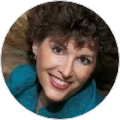

Amy Shojai, is a certified animal behavior consultant, and nationally known authority on pet care and behavior. She began her career as a veterinary technician and is the award-winning author of more than 35 prescriptive nonfiction pet books.
Related products

Science Diet's breakthrough nutrition supports ultimate digestive well-being & healthy microbiome

Precisely balanced nutrition with the delicious taste of savory minced chicken to help fuel the energy needs of cats during the prime of their life

Over 70% of cats lost weight within 10 weeks when fed this nutrition

Feline Adult Perfect Weight Variety Pack
Related articles

Discover how to identify cat sensitive skin and what you can do to help your cat thrive from head to paw.
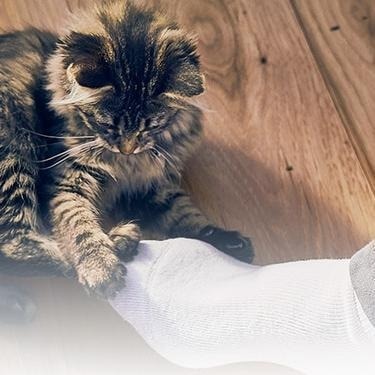
Discover which cat toys games your feline friend might like, and how they are great sources of exercise. Explore our library of articles to learn more.
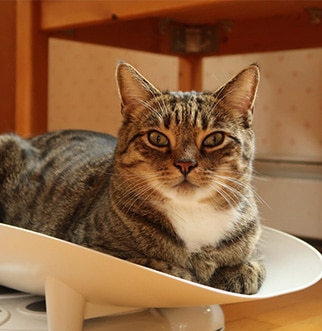
How do you get a cat to lose weight? Learn all about cat foods for weight loss, including how to choose weight control cat food and exercise tips.
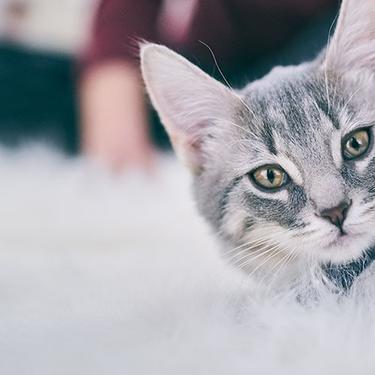
Discover the benefits of Hill's line of kitten foods and how they provide complete and balance nutrition for growing kittens.
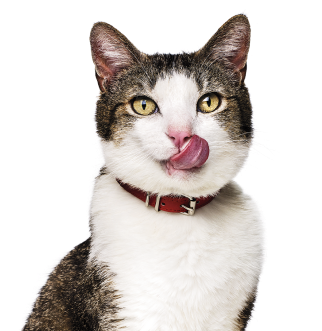
Put your cat on a diet without them knowing
Our low calorie formula helps you control your cat's weight. It's packed with high-quality protein for building lean muscles, and made with purposeful ingredients for a flavorful, nutritious meal. Clinically proven antioxidants, Vitamin C+E, help promote a healthy immune system.
Put your cat on a diet without them knowing
Our low calorie formula helps you control your cat's weight. It's packed with high-quality protein for building lean muscles, and made with purposeful ingredients for a flavorful, nutritious meal. Clinically proven antioxidants, Vitamin C+E, help promote a healthy immune system.

